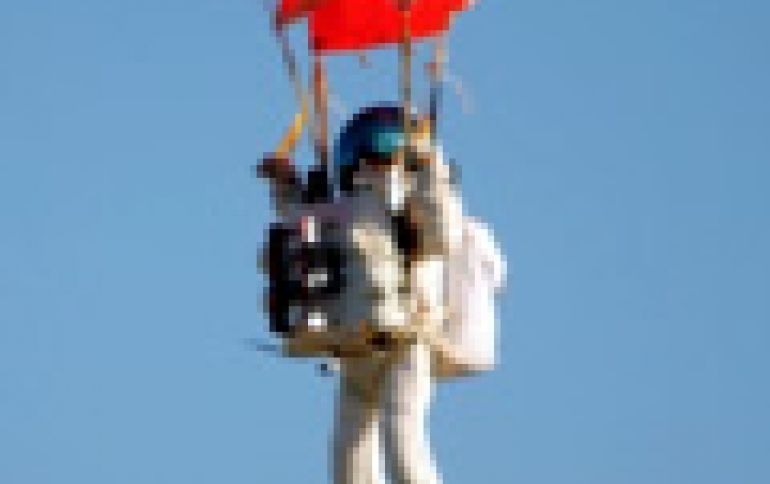
Google Executive Sets Record With Leap from Stratosphere
Google executive Alan Eustace set skydiving records over the southern New Mexico desert early Friday after taking a big leap from over 135,000 feet.
 Eustace's supersonic jump was part of a project by Paragon Space Development Corp. and its Stratospheric Explorer team, which has been trying to develop
a self-contained spacesuit and recovery system that would allow manned exploration of the stratosphere above 100,000 feet. Such a system has wide-ranging applications for; the study of the science of the stratosphere, development of means for spaceship crew egress, the study of dynamics of bodies at Mach 1, new high altitude aircraft suits, and setting of records for space diving, sailplaning and ballooning.
Eustace's supersonic jump was part of a project by Paragon Space Development Corp. and its Stratospheric Explorer team, which has been trying to develop
a self-contained spacesuit and recovery system that would allow manned exploration of the stratosphere above 100,000 feet. Such a system has wide-ranging applications for; the study of the science of the stratosphere, development of means for spaceship crew egress, the study of dynamics of bodies at Mach 1, new high altitude aircraft suits, and setting of records for space diving, sailplaning and ballooning.
Alan Eustace, Google's Senior Vice President, was send to the Stratosphere via a helium-filled scientific balloon while wearing a custom-made pressurized spacesuit and Paragon designed life support system.
"I always wondered: what if you could design a system that would allow humans to explore the stratosphere as easily and safely as they do the ocean? With the help of the world-class StratEx team, I hope we've encouraged others to explore this part of the world about which we still know so little, " said Eustace.
Ascending at about 1,000 feet per minute, Alan achieved his target altitude in about two and a half hours. He spent a short time, around a half hour, experiencing the wonders of the stratosphere before being released from the balloon. In rapid free fall, Alan experienced a short period of near weightlessness and within 90 seconds exceeded the speed of sound (822mph). Stabilized by a small drogue chute, he continued to free fall into thickening atmosphere for about five minutes. Slowing to a much more modest speed, he deployed his parachute at around 18,000 feet and floated gently to the ground. The descent under canopy took approximately fifteen minutes.
The technology that has gone into developing the balloon, the spacesuit and the other systems that were used in Friday's launch will be used to advance commercial spaceflight, namely efforts by Arizona-based World View Enterprises to take paying tourists up in a high-altitude balloon and luxury capsule starting in late 2016.




















